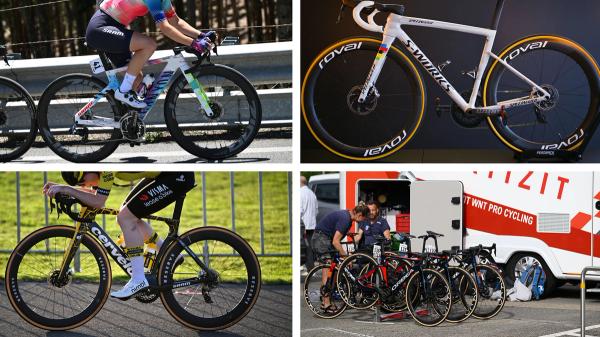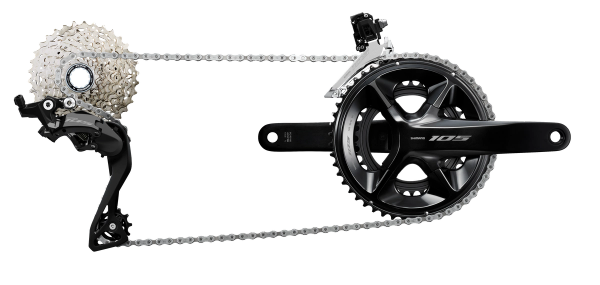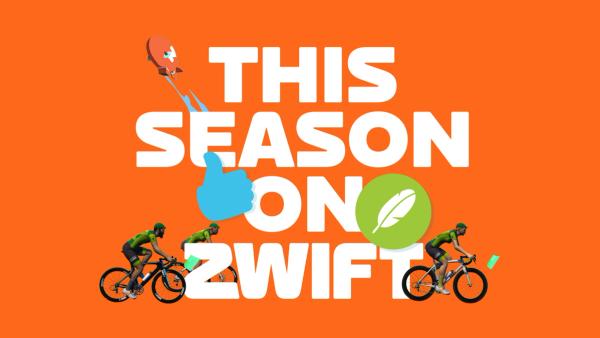Complete guide to road bike groupsets 2024
A guide to Shimano, SRAM and Campagnolo’s groupset hierarchies, plus how to choose between disc or rim brakes and electronic or mechanical shifting.
Tom Hallam-Gravells
Online Production Editor
© GCN
There are lots of things to consider when choosing a road bike groupset
Are you buying your first road bike or looking to upgrade? There are plenty of key factors to consider, but one of the most important is the groupset.
Picking a groupset can be tricky as there are so many different options available, so we’ve pulled together this complete guide to help. We’ve only covered the three main manufacturers - Campagnolo, Shimano and SRAM - but there are many others available.
- Read more: Complete guide to road cycling tyres
What is a groupset?
A groupset is the collection of components that make up the drivetrain and braking system. It’s essentially responsible for propelling a bike forward and bringing it to a safe stop. Most groupsets consist of the following:
- Chainset - this is the chainrings. Bikes will usually have one, two, or on some older models, three
- Cassette - the different gear sprockets at the rear of the bike
- Chain
- Derailleurs - these are what shift the chain into different gears on the chainrings and cassette
- Gear and brake levers - these are used to operate the brakes and derailleurs
- Brakes
So far so simple, but there are many different factors to consider when choosing a groupset.
Rim vs. disc brake
Rim versus disc brakes: it’s one of the most divisive topics in cycling.
It’s a modern debate, as until fairly recently, only rim brakes were used on road bikes. That’s completely changed in recent years and most modern bikes now have disc brakes. Why have things changed?
Disc brakes essentially provide better braking power and improved modulation, so a rider can more precisely control braking power. There are still plenty of hardcore rim brake fans out there who will deny this, but most of the industry has now embraced disc brake systems.
There are two disc brake systems available: mechanical or hydraulic. Like rim brakes, the mechanical system uses brake cables. Hydraulic systems don’t, instead using a system of hoses filled with brake fluid. When the brake levers are pulled, the fluid compresses against the brake pistons.
Generally, hydraulic brake systems perform better and are more popular. However, many entry-level bikes still have the mechanical alternative.
- Read more: Seven common disc brake mistakes to avoid
Bike gearing
Having the correct gear ratio on your bike can be the difference between flying up a hill and grinding to an embarrassing halt.
The number of gears on a bike is determined by the number of chainrings and cogs on the cassette. For example, a bike with two chainrings will have two gears on the front. If it’s combined with a cassette with 11 sprockets, it’ll have 22 gears.
The more gears a bike has, the better, as the incremental difference between the different gears will be smaller. Essentially, there will be no big jumps in difficulty between them.
Generally, more performance-orientated groupsets will have 22 or 24 gears, but it’s still possible to get a high-quality groupset with even fewer.
To complicate matters further, brands like SRAM are increasingly turning to 1x set-ups. These only have a single chainring, meaning fewer gears. There are some advantages to this system and we’ve provided a full breakdown on how to choose the right chainring combination for your needs in the video below.
TOP TIP: The number of gears on a bike will commonly be written as 2x11-speed. In this example, there are two chainrings and 11 cogs on the cassette. It would also commonly be referred to as 11-speed. Similarly, a cassette with 12 cogs will be labelled as 12-speed.
Electronic or mechanical shifting
Groupsets have either mechanical or electronic shifting systems. Most entry-level and many mid-range bikes use mechanical systems which are operated by cables.
Electronic groupsets don’t use gear cables, instead using motorised derailleurs which communicate with the shifters either wirelessly or semi-wirelessly. These are usually only specced on mid-to-high-end models, although the technology is slowly trickling down the different groupset hierarchies.
Shimano
That’s the anatomy of groupsets taken care of, now let’s take a look at the main groupset brands available. We’ll kick things off with Shimano, the oldest and most popular groupset manufacturer available.
It offers a six-tier system, starting from the entry-level Claris all the way to the electronic Dura-Ace at the top of the range.
That electronic tech has trickled down the hierarchy in recent times all the way to its third-tier 105, as has a lot of other tech and features, and you’ll get plenty of performance all the way down to the Tiagra.
Both the Claris and Sora options are rarely used on modern road bikes, although they may be specced on some entry-level models.
Testament to the quality of Shimano's groupsets, it will sponsor 15 of the 18 WorldTour teams in 2024.
- Read more: 2024 Men's WorldTour bikes: A guide to the bikes, groupsets, and tech of the top-tier teams
Claris

© Shimano
Shimano Claris mechanical groupset
Overview: The most affordable groupset available in this guide which is only found on entry-level bikes.
Gear ratio: 2x8 or 3x8
Brake system: Rim
Electronic or mechanical: Mechanical
Sora
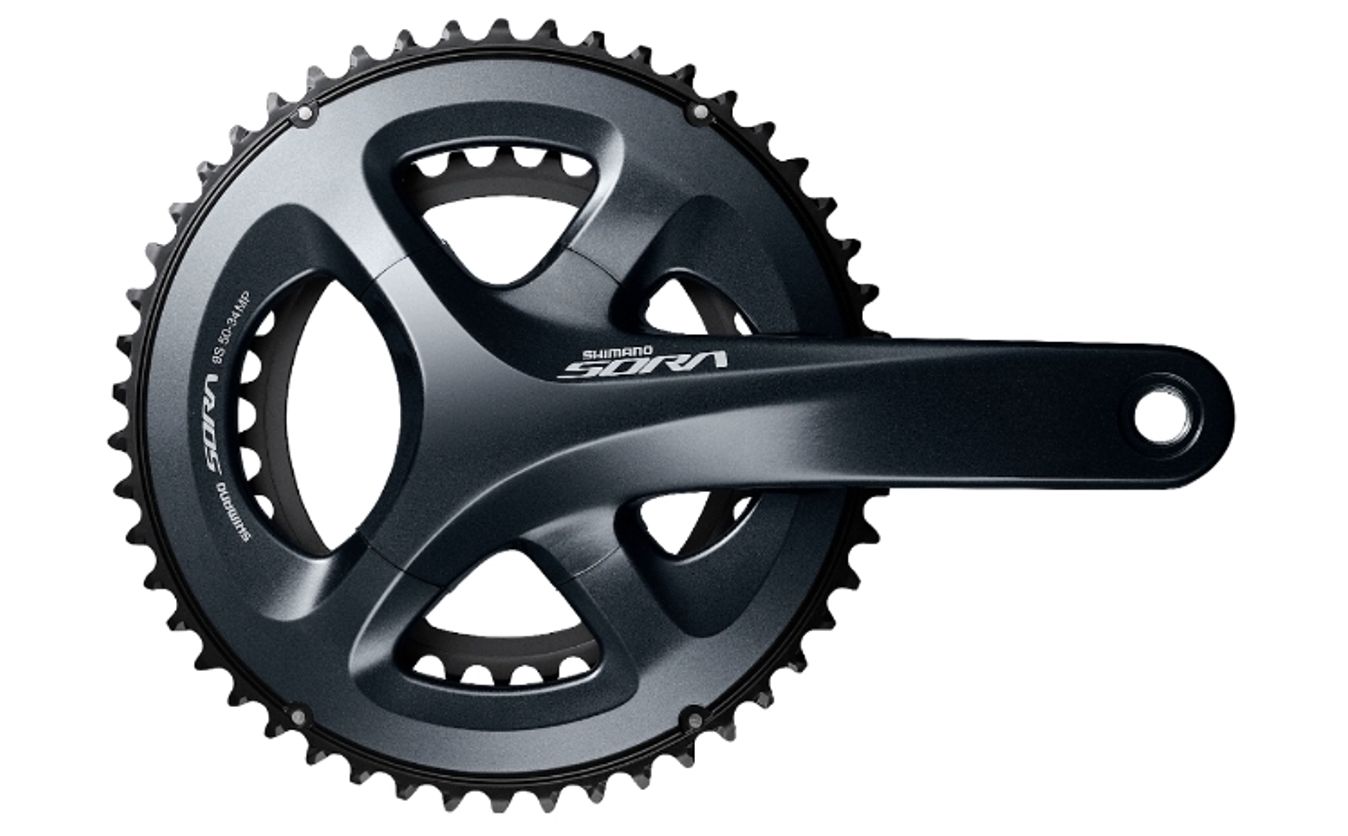
© Shimano
Shimano Sora mechanical groupset
Overview: Another cost-effective, entry-level model available in both rim and disc brake.
Gear ratio: 2x9 or 3x9
Brake system: Rim or mechanical disc
Electronic or mechanical: Mechanical
Tiagra
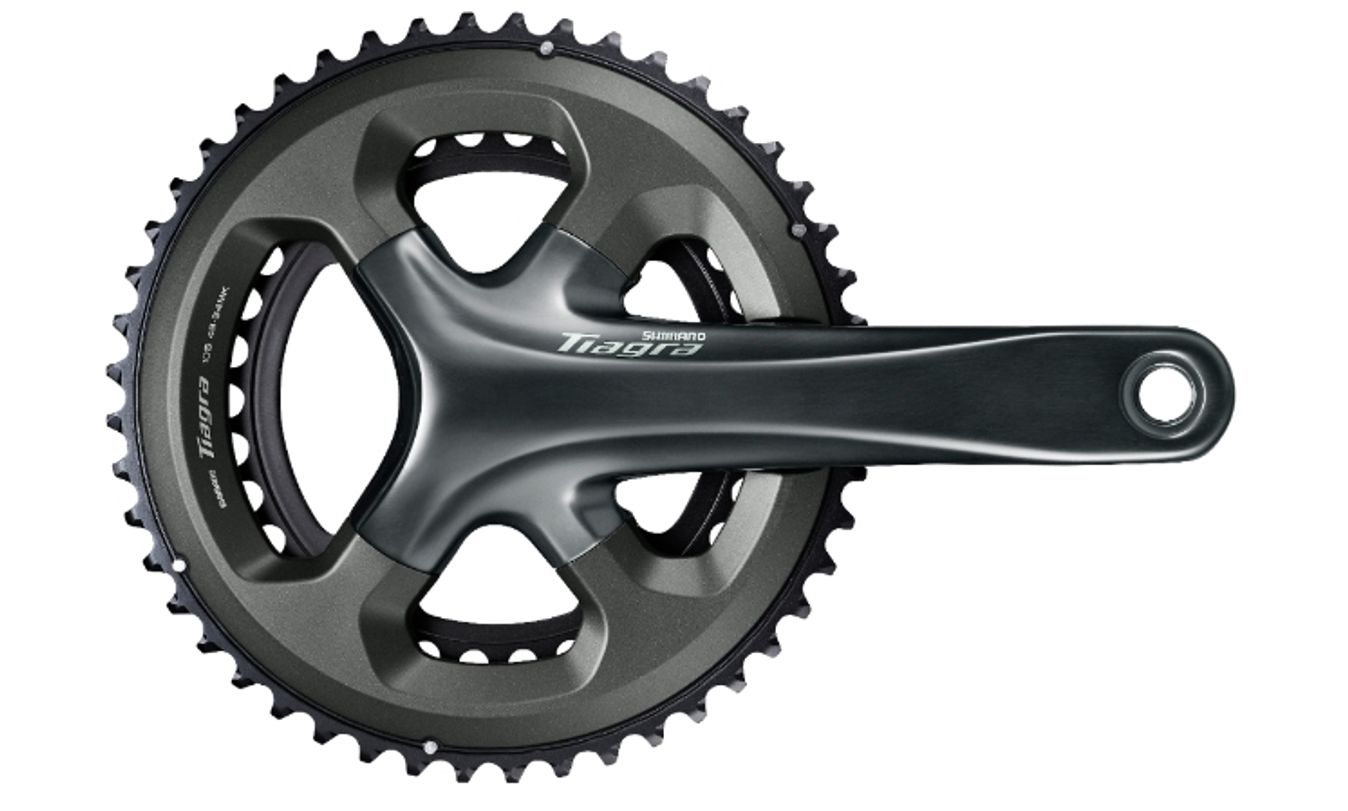
© Shimano
Shimano Tiagra mechanical groupset
Overview: Stepping up a level, Tiagra is only 10-speed but packs plenty of tech and quality into an affordable package.
Gear ratio: 2x10 or 3x10
Brake system: Rim or hydraulic disc brake
Electronic or mechanical: Mechanical
105

© Shimano
Shimano 105 groupset
Overview: Shimano’s first performance-orientated groupset which is commonly found on mid-range bikes and is widely regarded as one of the best all-round groupsets, combining a friendly cost with top features. In 2023 105 made the jump to 12-speed, making it Shimano's first 12-speed mechanical groupset.
Gear ratio: 2x12
Brake system: Hydraulic disc
Electronic or mechanical: Mechanical
105 Di2
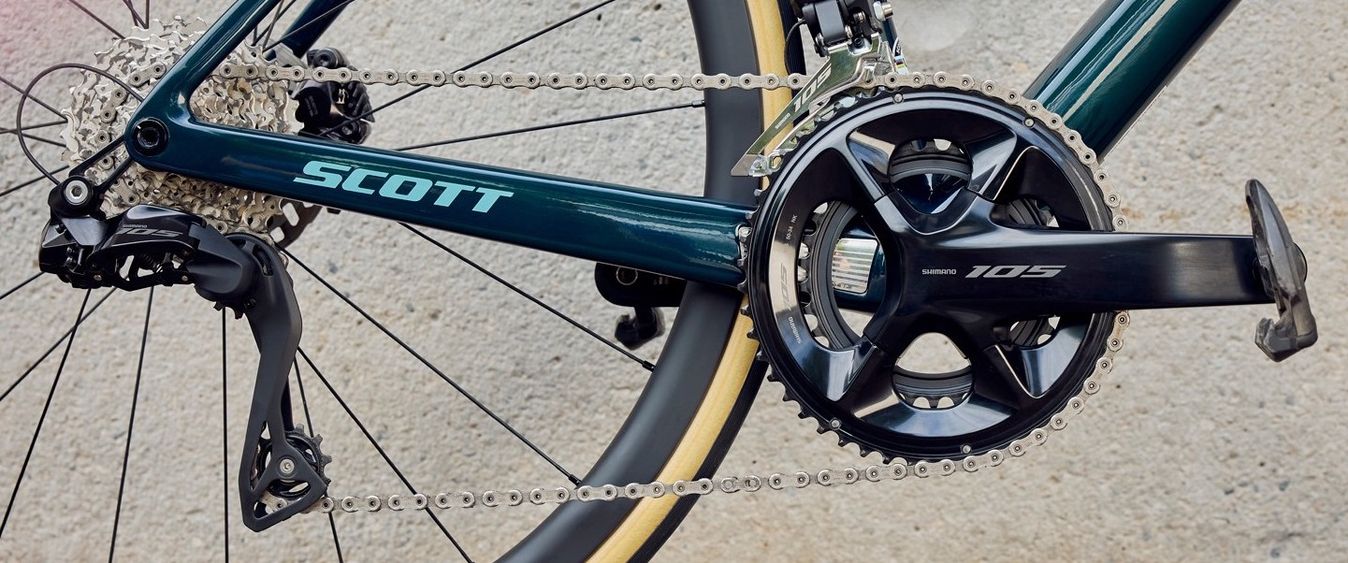
© Shimano
Shimano 105 Di2 groupset
Overview: Released in 2022, Shimano’s 105 Di2 packs electronic shifting and hydraulic disc brakes into a high-quality performance package.
Gear ratio: 2x12
Brake system: Hydraulic disc
Electronic or mechanical: Electronic
Ultegra Di2
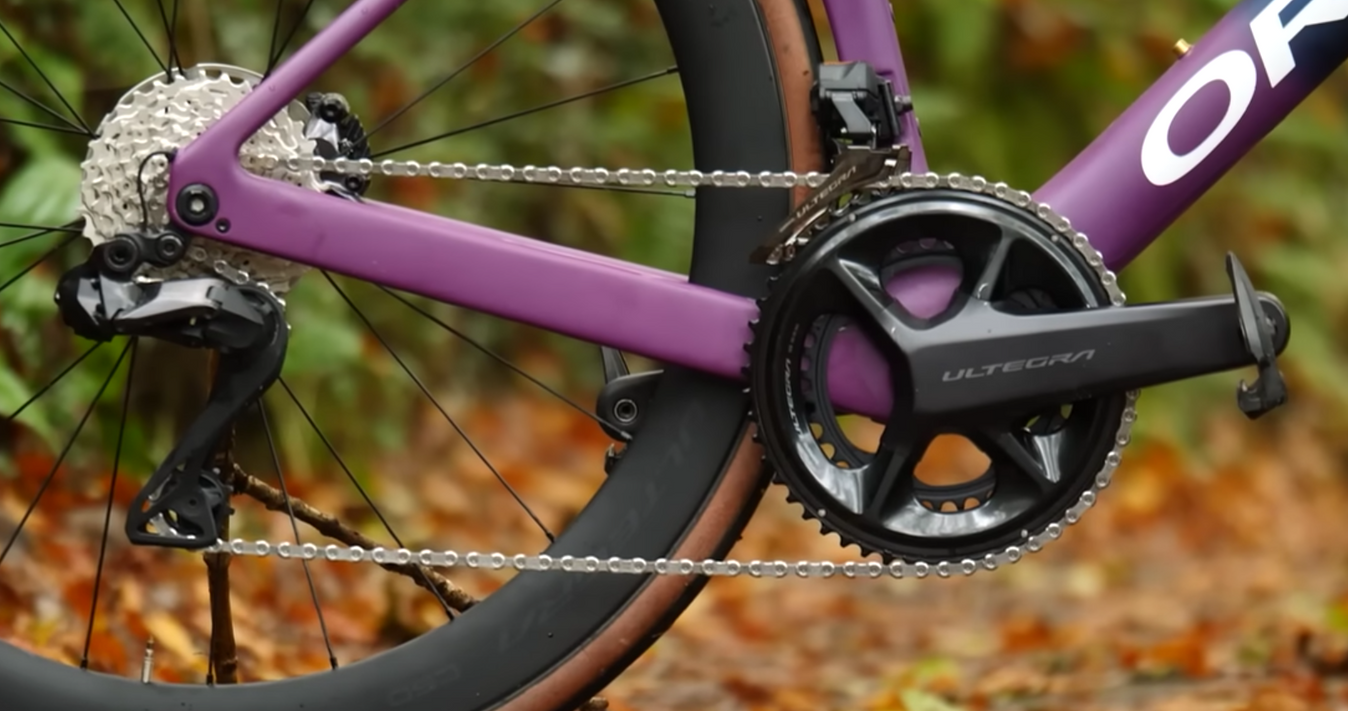
© GCN
Shimano Ultegra Di2 groupset
Overview: Shimano’s Ultegra groupset is now only available in electronic form, and despite falling below Dura-Ace in the hierarchy, it packs many of the same features as its more expensive counterpart.
Gear ratio: 2x12
Brake system: Rim (doesn’t include all Di2 features) and hydraulic disc
Electronic or mechanical: Electronic
Dura-Ace Di2
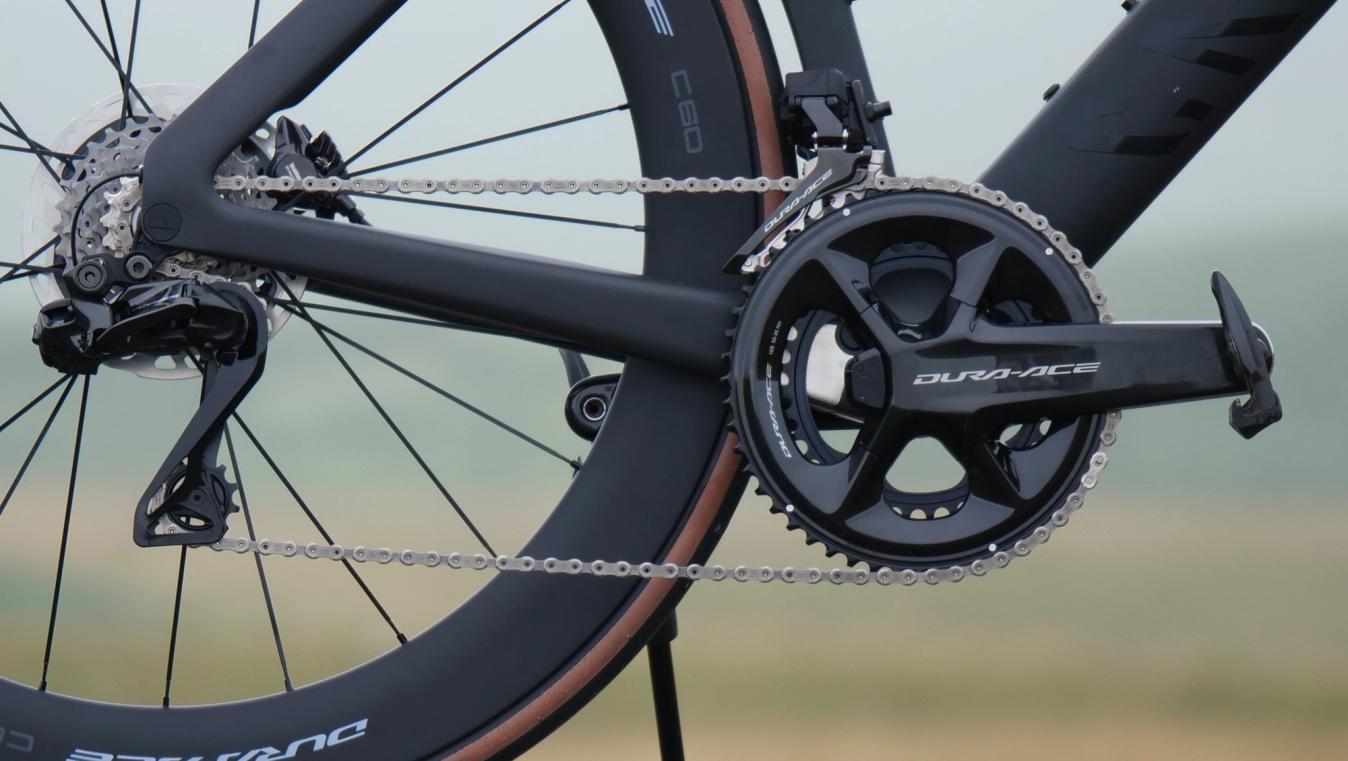
© GCN
Shimano Dura-Ace Di2 groupset
Overview: For all-out performance, Dura-Ace is Shimano’s best option, and is the choice of the pros.
Gear ratio: 2x12
Brake system: Rim and hydraulic disc
Electronic or mechanical: Electronic
Shimano power meters
On top of the standard options, both the Dura-Ace and Ultegra groupsets are available with power meter cranksets. Both are dual-sided and use strain gauges in the crankset to measure power. The Ultegra version has +/- 2% accuracy, while the figure stands at +/- 1.5% for Dura-Ace.
In addition, it's possible to buy separate power meters for a range of Shimano's groupsets - including Tiagra, 105, Ultegra and Dura-Ace - from third-party companies, including 4iiii.
- Read more: Can you trust your power meter?
Campagnolo
Next up, Campagnolo.
In the 20th century, it was arguably the biggest groupset brand around, teaming up with the greatest names in the sport, including Eddy Merckx.
Now its groupsets are a little rarer and the brand will be absent from WorldTour level in 2024 after AG2R Citroën made the switch to Van Rysel bikes and Shimano.
That’s partly because it fell behind its rivals in the electronic arms race, but Campagnolo responded in 2023 by releasing the new Super Record Wireless, its first fully wireless groupset.
Super Record Wireless sits at the top of Campagnolo’s smaller four-tier hierarchy, with the Record and Chorus sandwiched in the middle, and Centaur sitting at the bottom as the lowest option (while still sitting some way above entry-level).
Centaur
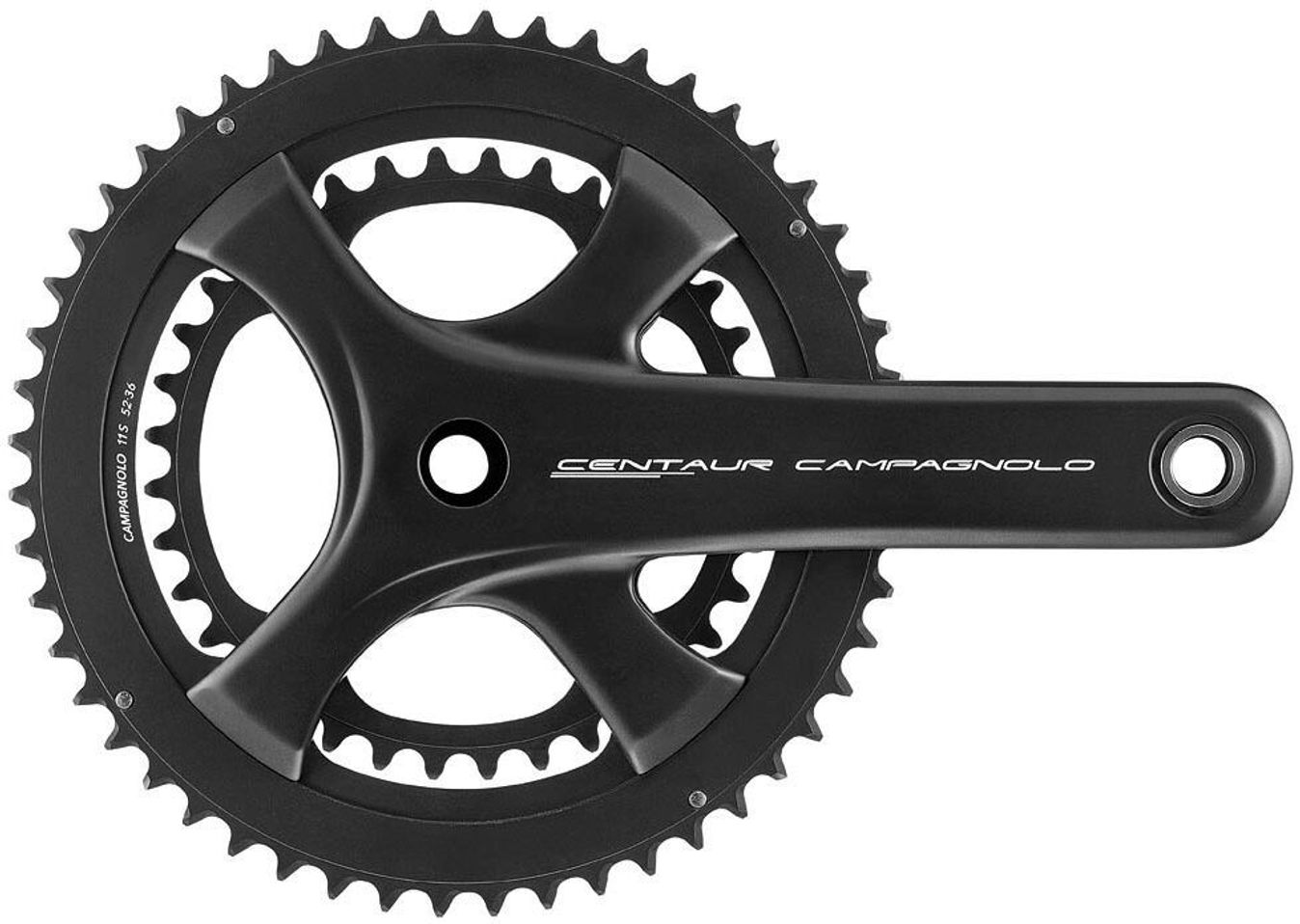
© Campagnolo
Campaganolo Centaur mechanical groupset
Overview: Campagnolo lacks a clear entry-level groupset and the Centaur is more equivalent to the 105 and Rival mid-range groupsets for Shimano and SRAM respectively.
Gear ratio: 2x11
Brake system: Rim
Electronic or mechanical: Mechanical
Chorus
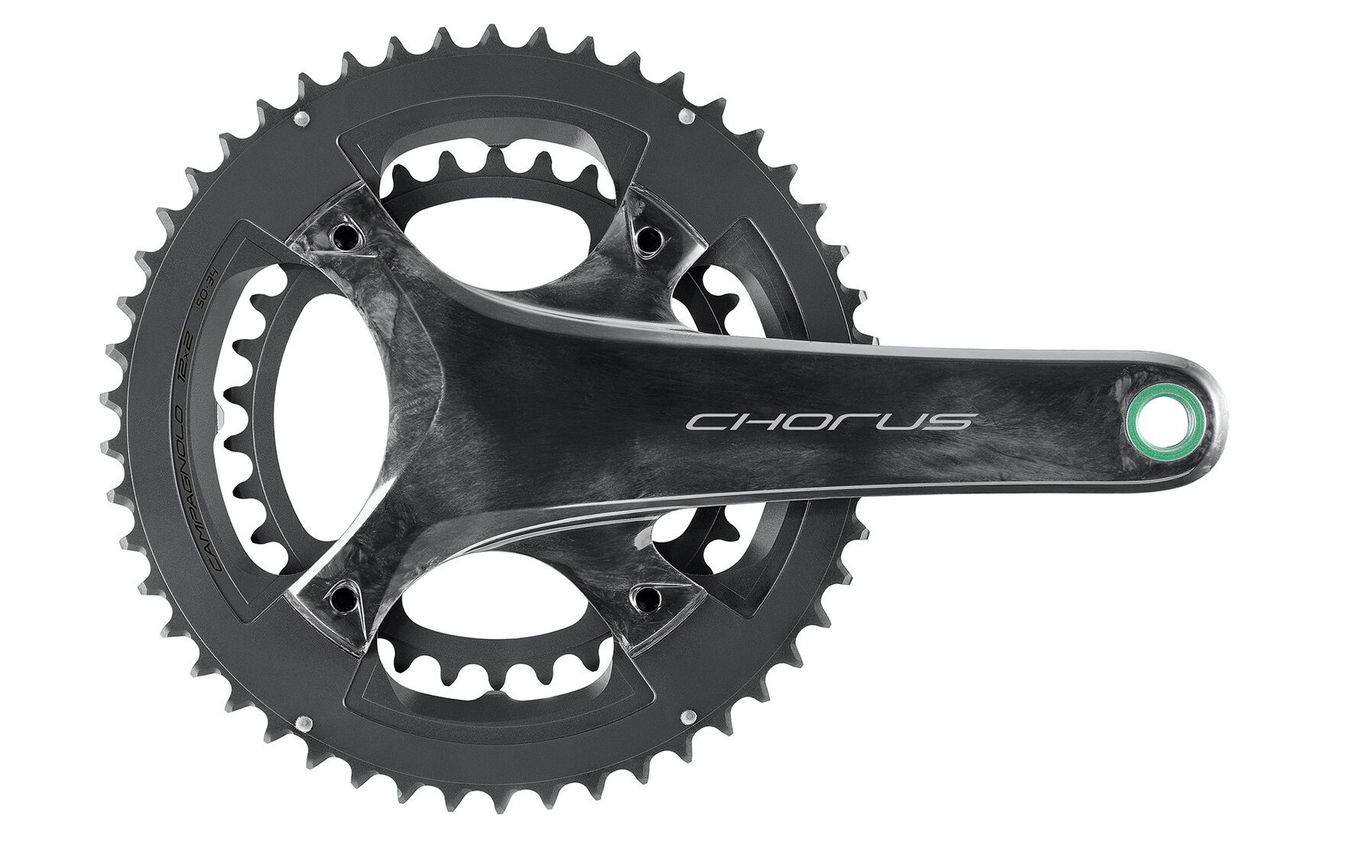
© Campagnolo
Campagnolo Chorus mechanical groupset
Overview: We’re only two groupsets into the hierarchy and the Chorus is already verging on pro-level features including 12-speed gearing.
Gear ratio: 2x12
Brake system: Rim and hydraulic disc
Electronic or mechanical: Mechanical
Record
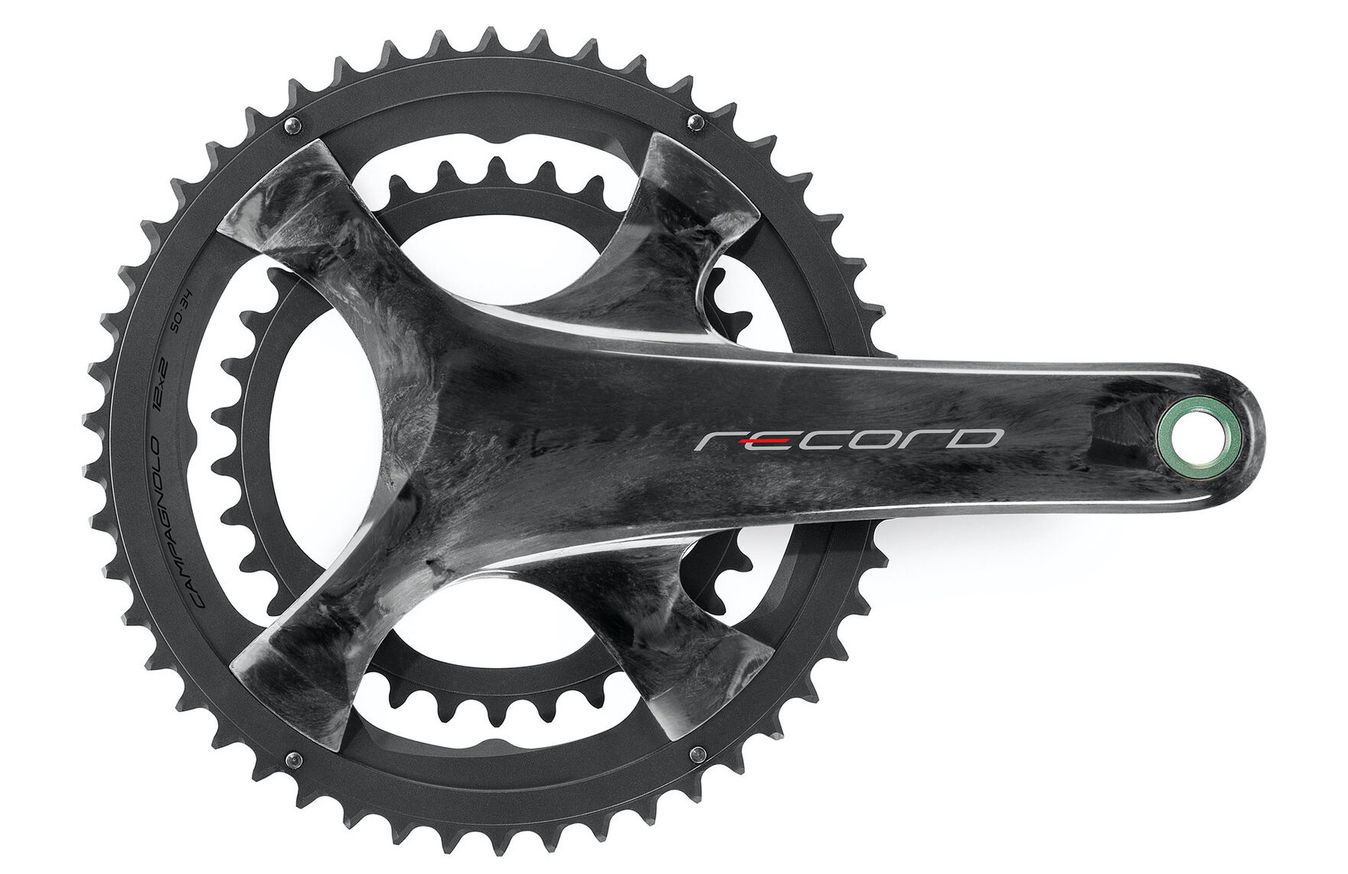
© Campagnolo
Campagnolo Record mechanical groupset
Overview: A performance-orientated mechanical groupset which has benefited from lots of trickled-down tech from the Super Record range.
Gear ratio: 2x12
Brake system: Rim and hydraulic disc
Electronic or mechanical: Mechanical
Super Record
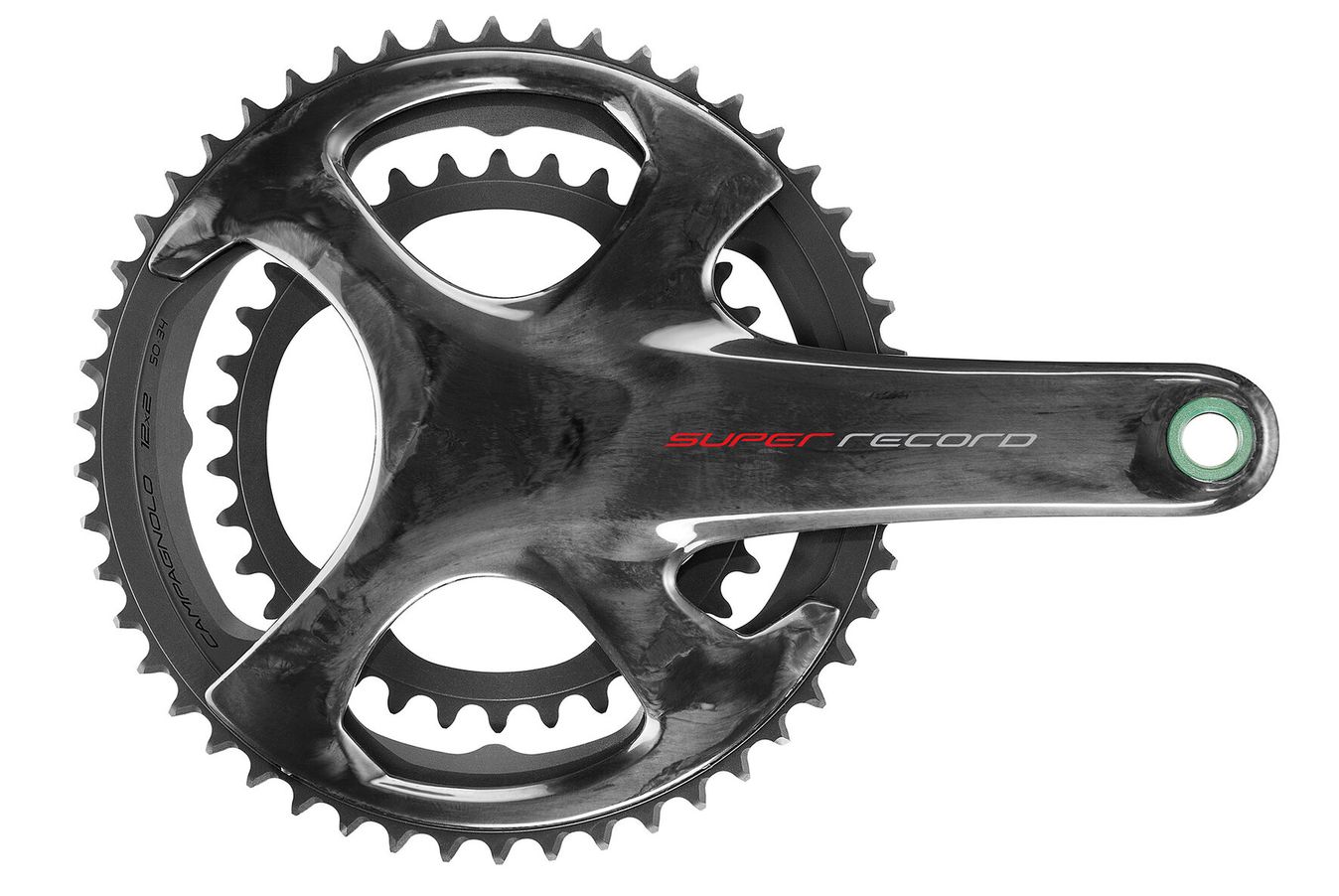
© Campagnolo
Campagnolo Super Record mechanical groupset
Overview: Campagnolo’s top, pro-level mechanical groupset which was only recently trumped by the Super Record Wireless.
Gear ratio: 2x12
Brake system: Rim and hydraulic disc
Electronic or mechanical: Mechanical
Super Record Wireless

© GCN
Campagnolo Super Record Wireless groupset
Overview: Campagnolo’s first wireless groupset offers the highest level of performance. It also packs a punch on the price front and is the most expensive groupset available out of the three main brands.
Gear ratio: 2x12
Brake system: Hydraulic disc
Electronic or mechanical: Electronic
Campagnolo power meters
Campagnolo's popularity has waned in recent years, as is reflected by its absence from WorldTour level of professional racing. The historical Italian brand fell behind its rivals in a few key areas, most notably only adding a fully wireless groupset to its offering in 2023, in the form of the Super Record Wireless.
It also didn't offer an in-house power meter until early 2024 when it unveiled the HPPM (High Precision Power Measurement). There were strong rumours that a power meter was in the offing, especially after the release of the Super Record Wireless groupset, and they proved to be correct.
The new power meter is only compatible with the Super Record Wireless groupset and can be bought already integrated into the crankset. It has a claimed accuracy of +/- 1%.
For other groupsets in Campagnolo's range, a third-party power meter is required, and there are various crank-based and spider-based options available.
SRAM
American brand SRAM is one of the largest groupset manufacturers and its components are specced on many bikes. SRAM splits its groupsets into four tiers, starting with the entry-level Apex before moving up through Rival, Force and then its top-end Red option.
Unlike the other major brands, it has electronic groupsets available at each of these levels, although they confusingly have different names. The first generation of SRAM’s electronic technology was named eTap, but the latest is eTap AXS. The eTap label has been dropped from both the Apex AXS and Force AXS groupsets but remains for the Rival eTap AXS and Red eTap AXS.
On top of the road groupset hierarchy provided below, SRAM also has a range of gravel-dedicated components which are labelled as XPLR. These are available at Rival, Force and Red level, and each has 1x12-speed gearing with electronic shifting. SRAM Apex AXS also comes as standard with an 11-44t XPLR cassette and is one-by only, so every tier of SRAM’s hierarchy is essentially available with XPLR components.
Here’s the full hierarchy of road groupsets, starting from the lower-end Apex 1 all the way through to the pro-level Red eTap AXS.
Apex 1
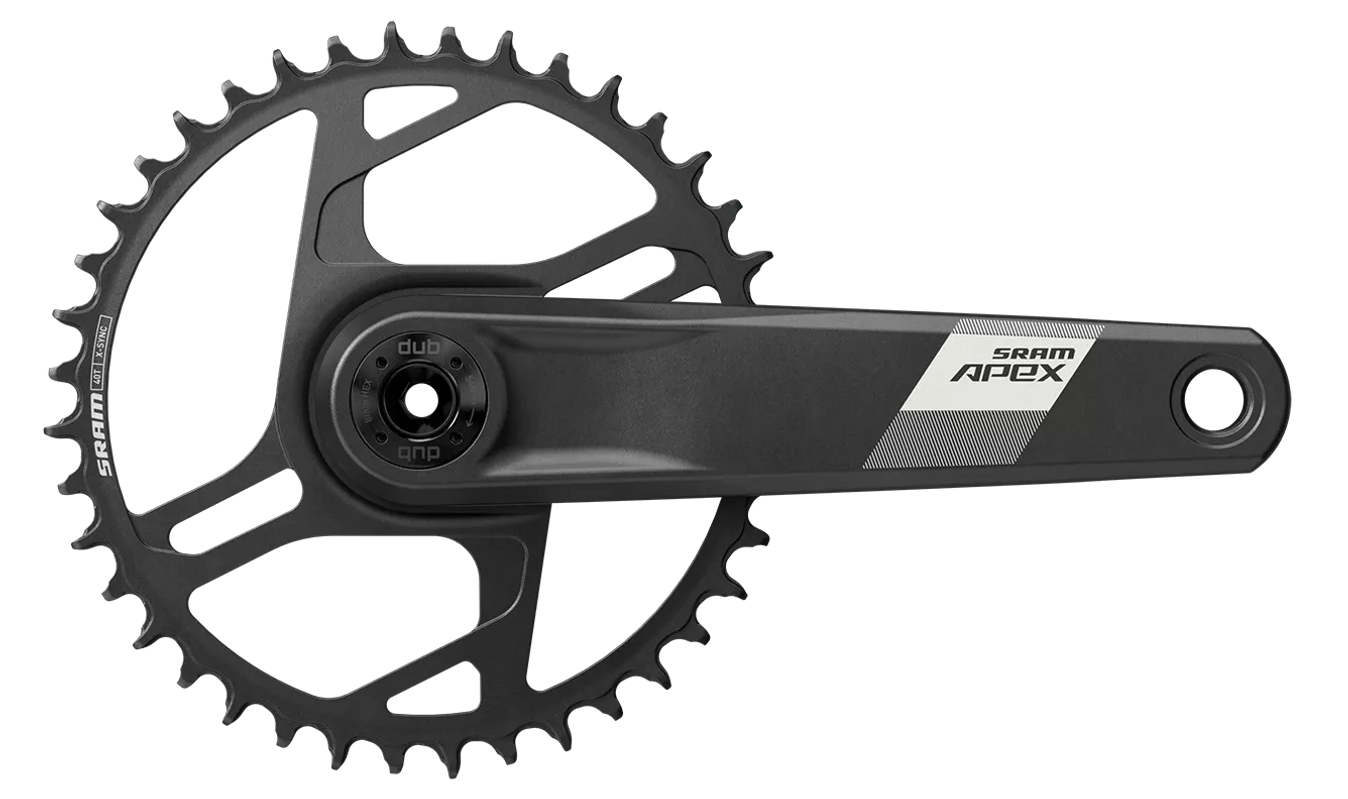
© SRAM
SRAM Apex 1 groupset
Overview: A high-quality, entry-level groupset with a 1x setup and hydraulic disc brakes.
Gear ratio: 1x11
Brake system: Hydraulic disc and supports mechanical disc
Electronic or mechanical: Mechanical
Apex
Overview: The original Apex uses a two-by set-up and has been left behind by the Apex 1, mainly because it’s still only available with rim brakes. It's no longer listed on SRAM's website, although they still sell replacement shifters.
Gear ratio: 2x10
Brake system: Rim
Electronic or mechanical: Mechanical
Apex AXS

© GCN
SRAM Apex AXS groupset
Overview: SRAM’s electronic tech has filtered down to the Apex. The Apex AXS is more targeted at gravel bikes but can be adapted for road bikes.
Gear ratio: 1x12
Brake system: Hydraulic disc
Electronic or mechanical: Electronic
Rival

© SRAM
SRAM Rival groupset
Overview: SRAM Rival hasn’t been updated for a while but is a good step up for anyone looking for a more performance-orientated option than Apex.
Gear ratio: 2x11
Brake system: Rim and hydraulic disc
Electronic or mechanical: Mechanical
Rival 1
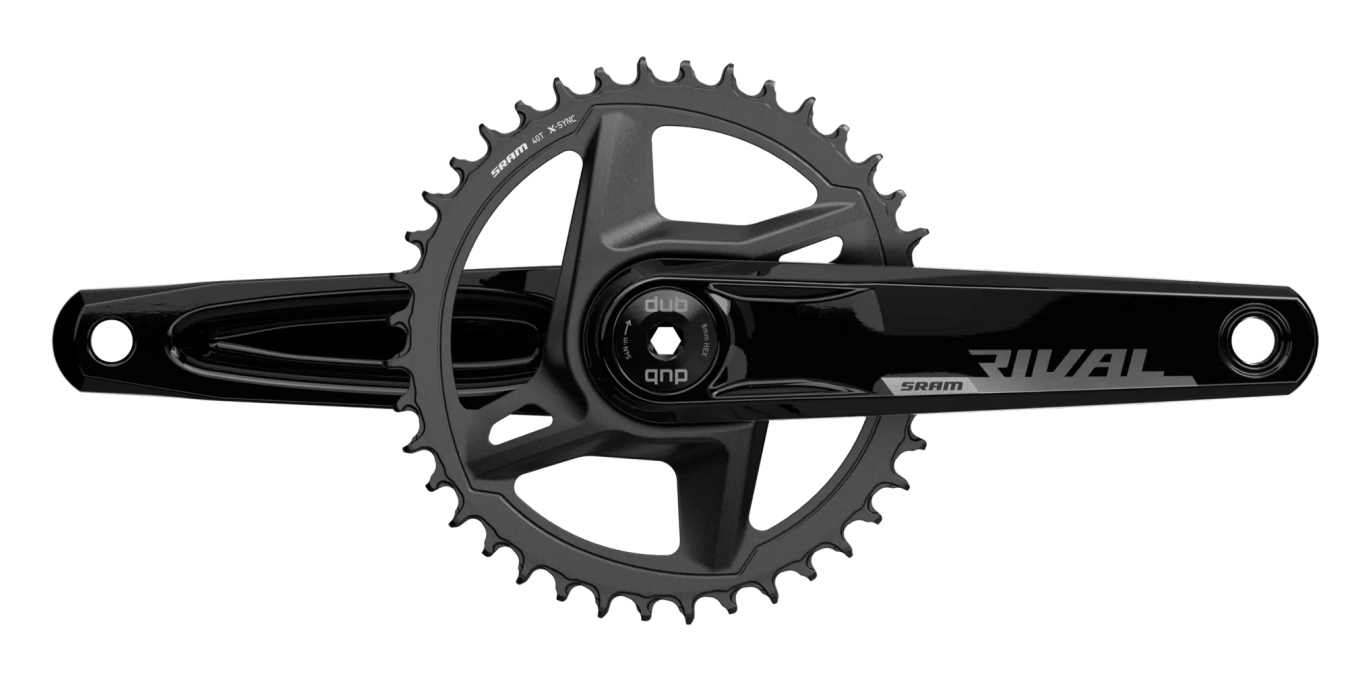
© SRAM
SRAM Rival 1 groupset
Overview: A one-by version of the Rival groupset, targeted more towards gravel bikes.
Gear ratio: 1x11
Brake system: Hydraulic disc
Electronic or mechanical: Mechanical
Rival eTap AXS
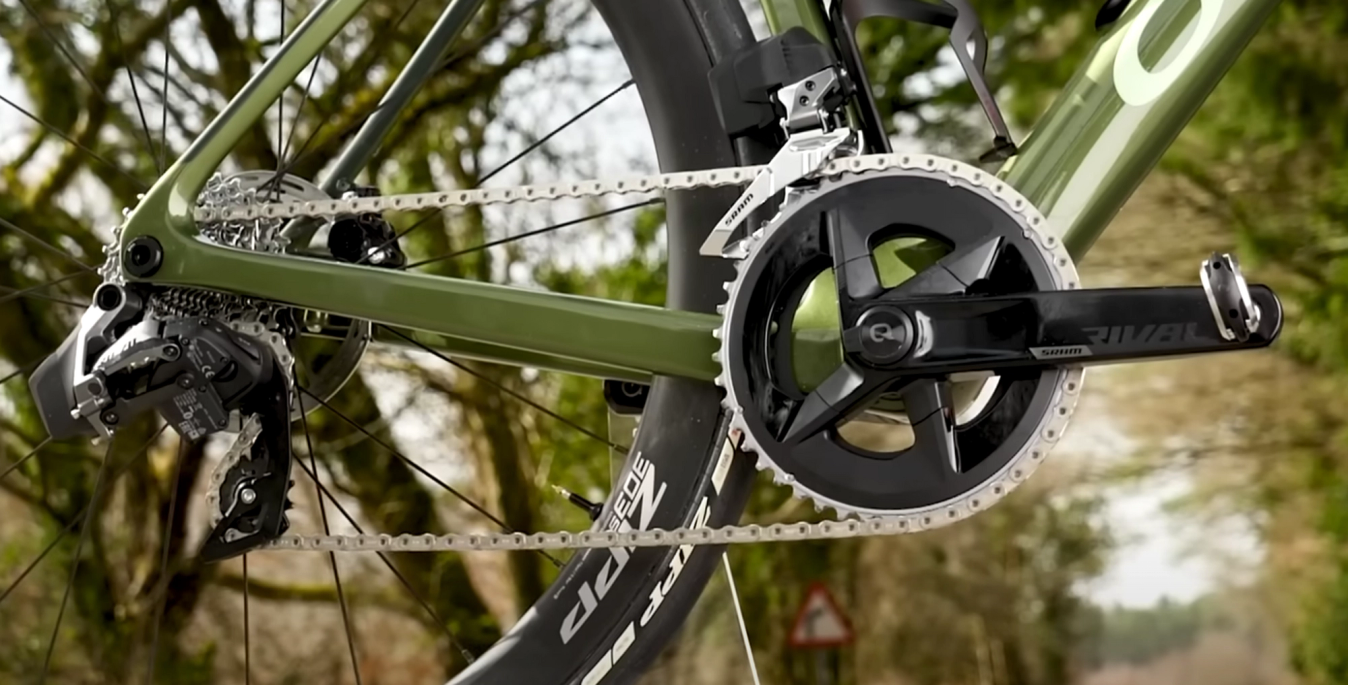
© GCN
SRAM Rival eTap AXS
Overview: The Rival mechanical groupset has become outdated due to the Rival eTap AXS which brings SRAM’s electronic tech to their third-tier groupset, creating an impressive package.
Gear ratio: 1x12 and 2x12
Brake system: Hydraulic disc
Electronic or mechanical: Electronic
Force
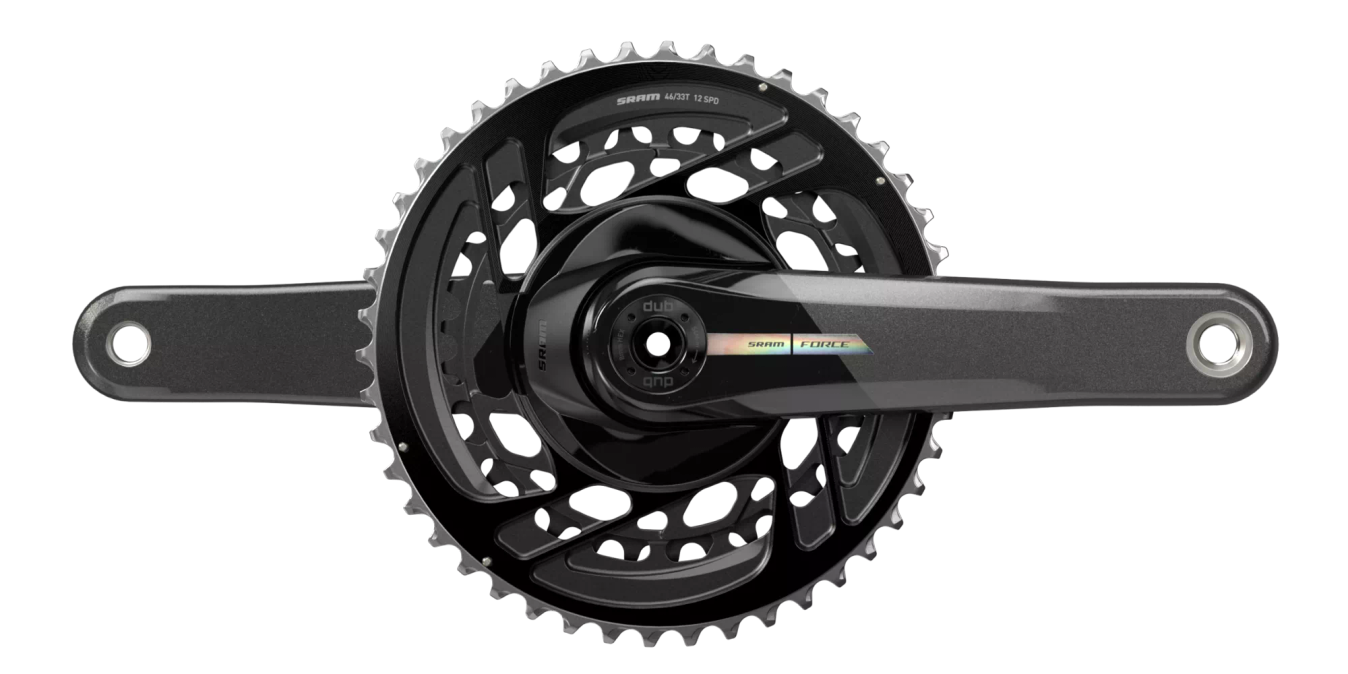
© SRAM
SRAM Force groupset
Overview: Still 11-speed but with lots of trickled-down tech, this is a solid, performance option.
Gear ratio: 2x11
Brake system: Rim and hydraulic disc
Electronic or mechanical: Mechanical
Force 1
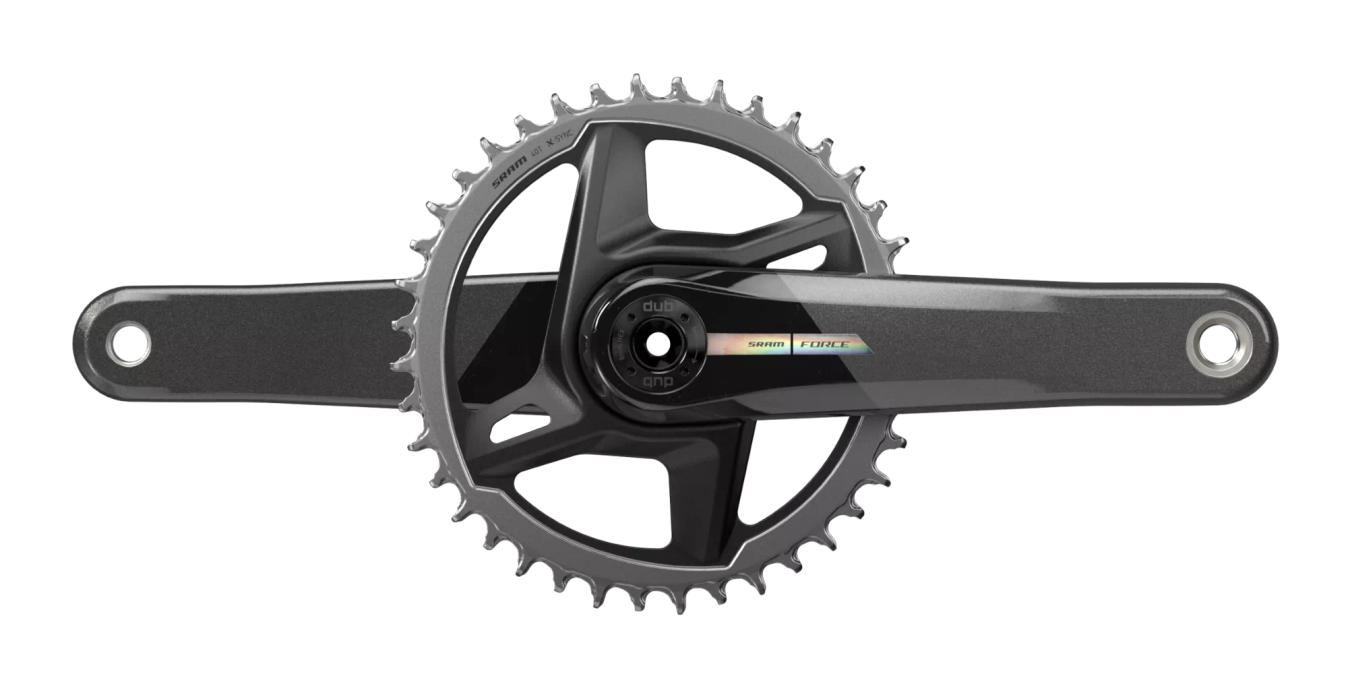
© SRAM
SRAM Force 1 groupset
Overview: A 1x version of the mechanical Force groupset, targeted more towards gravel bikes.
Gear ratio: 1x11
Brake system: Hydraulic disc
Electronic or mechanical: Mechanical
Force AXS
Overview: The Force AXS recently underwent an update in 2023 and is one of the best performance groupsets currently available.
Gear ratio: 1x12 and 2x12
Brake system: Hydraulic disc
Electronic or mechanical: Electronic
Red eTap AXS
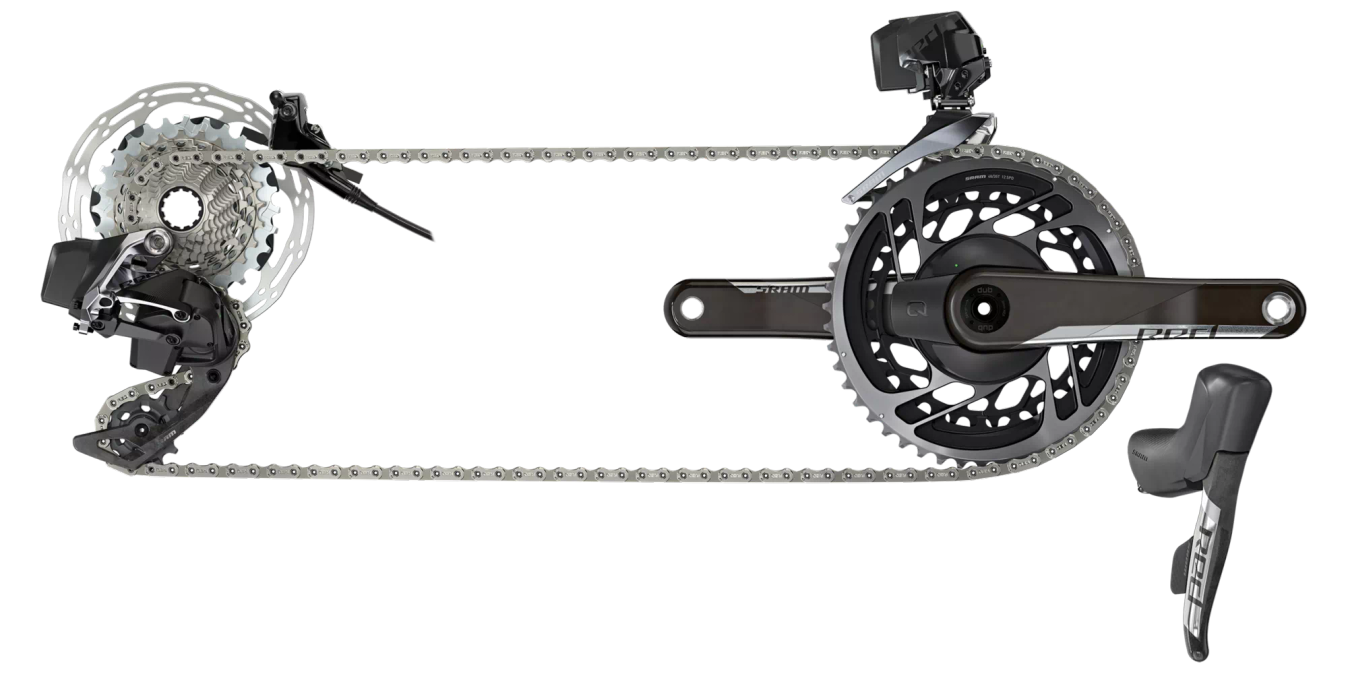
© SRAM
SRAM Red eTap AXS groupset
Overview: SRAM’s highest-performing option, the choice of the pros. Available in both a 1x and 2x set-up.
Gear ratio: 1x12 and 2x12
Brake system: Rim and hydraulic disc
Electronic or mechanical: Electronic
SRAM power meters
SRAM is home to many in-house brands, including Quarq, which produces power meters. These power meters are compatible with SRAM's groupsets and can be bought separately. SRAM also sells versions of its Red, Force and Rival cranksets with Quarq power meters already integrated, although only for its electronic AXS groupsets. These use a spider-based power meter.
For those who need to buy a power meter separately, Quarq offers both spider-based and crank-based power meters.
So there you have it, a complete guide to all the groupsets available from all the main manufacturers. No matter your budget, needs or preferences, hopefully this guide will help you identify what is best for you and your bike.
If any of these take your fancy and you want to install a mechanical groupset yourself, check out our how to guide on just this topic!
Head over to our tech section of the GCN website for all the latest news, guides and tech related features.
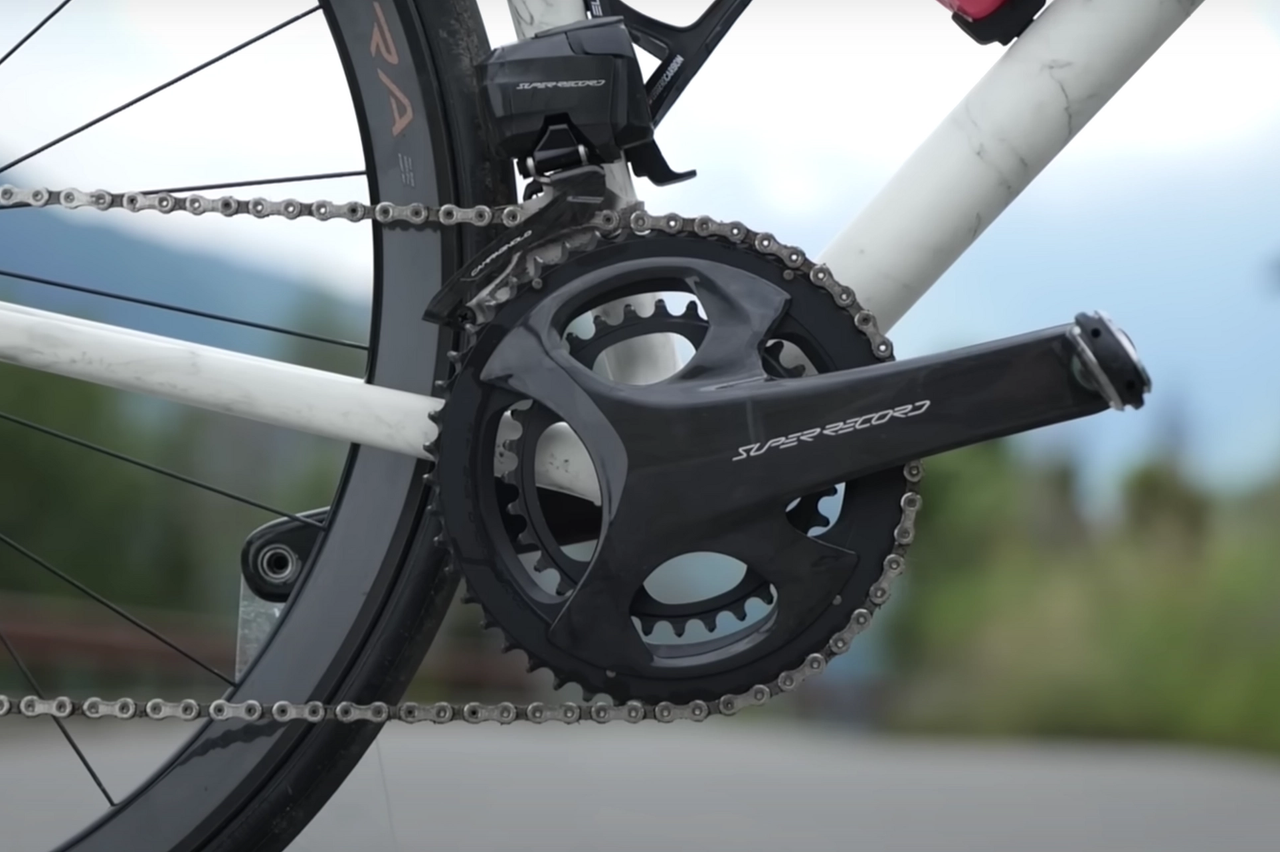








.jpg?w=600&auto=format)

